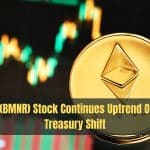Lyft, Inc. (LYFT), a peer-to-peer marketplace for on-demand ridesharing, has declined 5.46% in aftermarket trading sessions and consequently is trading at $38.95 at the time of the writing. During Tuesday’s regular trading session, the stock surged by 5.37% and closed the day at $41.20. The surge came as a result of outstanding results for fiscal 2021 but fell in later fell in aftermarket, the reason being cautious forecast.
Top 5 Tech Stocks to Buy in 2024
Don't let the chaos of rising interest rates, potential recession, tighter credit issues, higher oil prices, and incessant geopolitical issues chase you from the markets. Instead, just wait it out. With too much fear in the market, go bargain hunting with tech stocks. We have complied a report with the five of the best ways to profit within this industry.
"Top 5 AI Stocks to Buy in 2024."
Click here to sign up for our free report & newsletter, plus bonus offer "Elon Musk just Tiggered a BOOM in These Stocks"
Sponsored
LYFT FY2021 Results
On Tuesday, LYFT announced the results for FY2021. The year ended on 31st December 2021. The total revenue for the 12 months stood at $3.2 billion against $2.3 billion for the fiscal year 2020. The total costs and expenses for fiscal 2021 stood at $4.2 billion against $4.1 billion for fiscal 2020. The net loss suffered by the company during the period was $1 billion (or $3.02 per basic and diluted share) against $1.75 billion (or $5.61 per basic and diluted share) for fiscal 2020.
Q4 2021 Results
Alongside, LYFT also released the results for Q4 2021. The company reported revenue of $969.9 million against $569.9 million for the same quarter of 2020. The net loss for the three months hovered around $258.6 million as compared to $458.2 million for the same period of 2020. The adjusted net income for Q4 2021 was $32.1 million against an adjusted net loss of $185.3 million for Q4 2020.
Executive Commentary
Logan Green, co-founder, and chief executive officer of Lyft, while commenting said that the company has strengthened its position during the fiscal year 2021. Despite some of the short-term challenges which could hinder the growth of the company, there’s a sense of optimism about how the company would perform in the next quarter and year 2022.
What’s Next for LYFT?
During the last three months, LYFT stock has declined by approximately 25%, the reason being both company-specific and market-related factors. Looking ahead, analysts believe that the stock has got several positive technical signals at this point in time, and hence, is expected to perform well in the short term.









